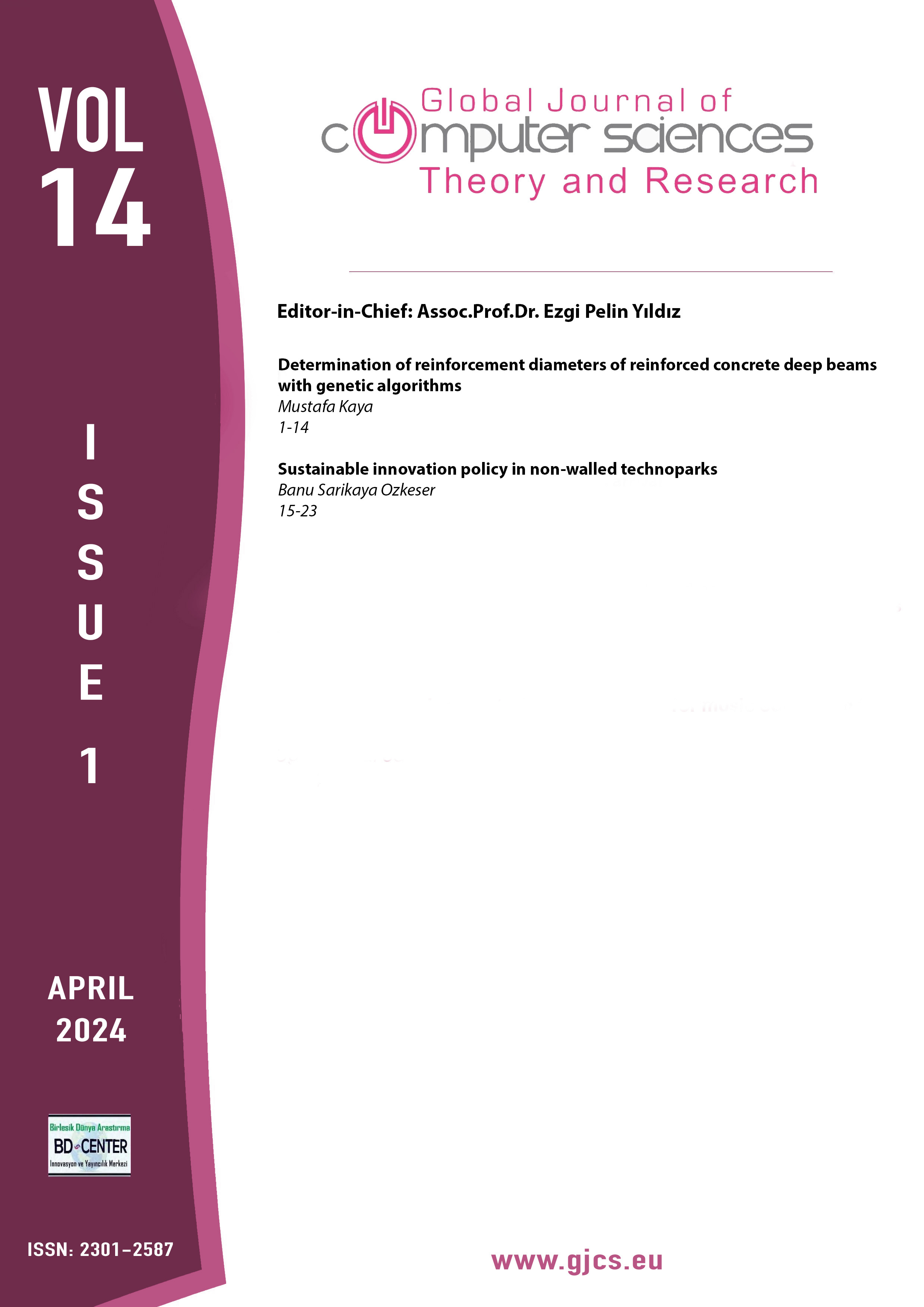Determination of reinforcement diameters of reinforced concrete deep beams with genetic algorithms
Main Article Content
Abstract
Genetic algorithms, a stochastic research method, emerged by adapting the development process of biological systems to the computer environment. Operations carried out in genetic algorithms are performed on units stored in computer memory, similar to natural populations. Many linear or nonlinear methods have been developed to solve optimization problems. Since genetic algorithms are heuristic, they may not find the optimum result for a given problem; however, they give very close to optimum values for problems that cannot be solved by known methods or whose solution time increases exponentially with the solution of the problem. Genetic algorithms are initially applied to nonlinear optimization problems. In this study, a genetic algorithm was applied to the single-span beam, a single-span beam with a gap in its body. While applying to the genetic algorithm the problems developed back-controlled selection, randomly mixed crossover, double-sensitivity mutation operators, and backward-controlled stopping criterion were used. As a result, developed genetic algorithm operators were applied to the too-big-sized beam problems. These beams' dimensions were too big but they weren’t deep beams according to ACI 318-95 rules.
Keywords: Deep beams; genetic algorithms; reinforcement diameters; selection Operator.
Downloads
Article Details

This work is licensed under a Creative Commons Attribution 4.0 International License.
Global Journal of Computer Sciences: Theory and Research is an Open Access Journal. All articles can be downloaded free of charge. Articles published in the Journal are Open-Access articles distributed under CC-BY license [Attribution 4.0 International (CC BY 4.0)]
Birlesik Dunya Yenilik Arastirma ve Yayincilik Merkezi (BD-Center) is a gold open access publisher. At the point of publication, all articles from our portfolio of journals are immediately and permanently accessible online free of charge. BD-Center articles are published under the CC-BY license [Attribution 4.0 International (CC BY 4.0)], which permits unrestricted use, distribution, and reproduction in any medium, provided the original authors and the source are credited.
